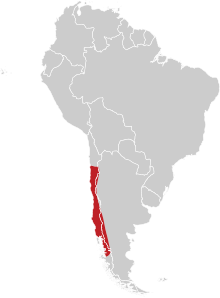
Drosophila is a genus of flies, belonging to the family Drosophilidae, whose members are often called "small fruit flies" or pomace flies, vinegar flies, or wine flies, a reference to the characteristic of many species to linger around overripe or rotting fruit. They should not be confused with the Tephritidae, a related family, which are also called fruit flies ; tephritids feed primarily on unripe or ripe fruit, with many species being regarded as destructive agricultural pests, especially the Mediterranean fruit fly.
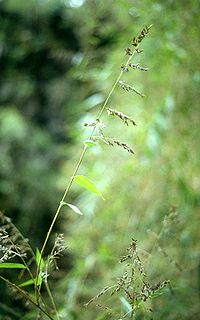
Chusquea is a genus of evergreen bamboos in the grass family. Most of them are native to mountain habitats in Latin America, from Mexico to southern Chile and Argentina.

The Drosophilidae are a diverse, cosmopolitan family of flies, which includes fruit flies. Another unrelated family of flies, Tephritidae, also includes species known as "small fruit flies". The best known species of the Drosophilidae is Drosophila melanogaster, within the genus Drosophila, and this species is used extensively for studies concerning genetics, development, physiology, ecology and behaviour. This fruit fly is mostly composed of post-mitotic cells, has a very short lifespan, and shows gradual aging. As in other species, temperature influences the life history of the animal. Several genes have been identified that can be manipulated to extend the lifespan of these insects. Additionally, Drosophila subobscura, also within the genus Drosophila, has been reputed as a model organism for evolutionary-biological studies.

The Tephritidae are one of two fly families referred to as fruit flies, the other family being the Drosophilidae. The family Tephritidae does not include the biological model organisms of the genus Drosophila, which is often called the "common fruit fly". Nearly 5,000 described species of tephritid fruit fly are categorized in almost 500 genera of the Tephritidae. Description, recategorization, and genetic analyses are constantly changing the taxonomy of this family. To distinguish them from the Drosophilidae, the Tephritidae are sometimes called peacock flies, in reference to their elaborate and colorful markings. The name comes from the Greek τεφρος, tephros, meaning "ash grey". They are found in all the biogeographic realms.

The Drosophilinae are the largest subfamily in the Drosophilidae. The other subfamily is the Steganinae.
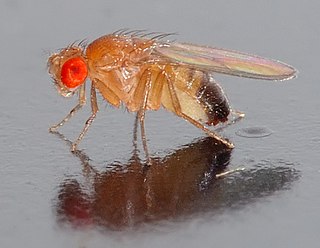
The paraphyletic subgenus Sophophora of the genus Drosophila was first described by Alfred Sturtevant in 1939. It contains the best-known drosophilid species, Drosophila melanogaster. Sophophora translates as carrier (phora) of wisdom (sophos). The subgenus is paraphyletic because the genus Lordiphosa and the species Hirtodrosophila duncani are also placed within this subgenus.

The Chamaemyiidae are a small family of acalyptrate flies with less than 200 species described worldwide. The larvae of these small flies are active and predatory and are often used for biological control of aphids, scale insects, and similar pests. Chamaemyiid fossils are poorly represented in amber deposits, but a few examples are known from the Eocene epoch onwards.

The Coelopidae or kelp flies are a family of Acalyptratae flies, they are sometimes also called seaweed flies, though both terms are used for a number of seashore Diptera. Fewer than 40 species occur worldwide. The family is found in temperate areas, with species occurring in the southern Afrotropical, Holarctic, and Australasian regions.
Hirtodrosophila confusa is a widespread, but rare European species of fruit fly from the family Drosophilidae.

Hirtodrosophila is a genus of fruit flies from the family Drosophilidae. Originally Hirtodrosophila was a subgenus of the genus Drosophila. It was raised to the status of genus by Grimaldi in 1990.
The subgenus Siphlodora belongs to genus Drosophila and consists of two species that share a sigmoid-shaped posterior crossvein. Phylogenetically, the subgenus is positioned within the virilis-repleta radiation.
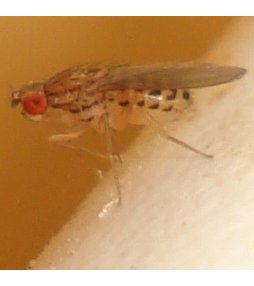
The subgenus Dorsilopha belongs to genus Drosophila and consists of four species. The phylogenetic position of this group has been unclear for a long time, but recent studies have shown that the subgenus is positioned ancestral to the subgenus Drosophila.
The subgenus Dudaica belongs to genus Drosophila and consists of two species, Drosophila malayana and Drosophila senilis Duda, 1926.

The genus Zaprionus belongs to the family fruit fly Drosophilidae and is positioned within the paraphyletic genus Drosophila. All species are easily recognized by the white longitudinal stripes across the head and thorax. The genus is subdivided in two subgenera, based on the presence of an even or odd number of white stripes. The species of the genus can be found in African and Southern Asia. One species, Zaprionus indianus, has invaded the New World.

Chymomyza is a genus of vinegar flies.

Lordiphosa is a genus of fly in the family Drosophilidae.

The Drosophila Immigrans species group is a polyphyletic and speciose lineage of Drosophila flies, including over 100 species. Immigrans species belong to the Immigrans-tripunctata radiation of the subgenus Drosophila. Well-described species include Drosophila immigrans, and the sister species Drosophila albomicans and Drosophila nasuta. The genome of D. albomicans was sequenced in 2012 in an effort to characterize novel sex chromosome development in D. albomicans. Immigrans group species are related to mushroom-breeding Drosophila of the Quinaria and Testacea species groups.
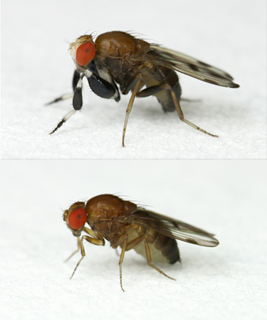
Drosophila prolongata is a fly of the family Drosophilidae. This species is endemic to southeast Asia. Males of this species express one of most extreme reversed sexual size dimorphism in the Drosophilidae, making this species an interesting model organism for the study of sexual selection. Males also display remarkable copulation courtship behaviour.
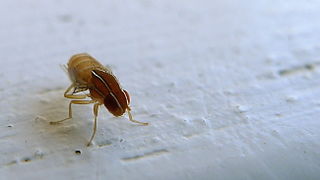
Zaprionus tuberculatus is a member of the subgenus and genus Zaprionus, family Drosophilidae, and order Diptera. It is an invasive fruit fly that originated in Africa, but can also be found in Europe and Asia. The fly earned its common name, the "vinegar fly", because researchers frequently captured the species using vinegar traps. Z. tuberculatus was previously considered a strictly tropical fly, but evidence of invasion to nontropical regions such as Turkey has been shown.
Drosophila acanthomera is a species of fruit fly in the genus Drosophila.
